
Ná t’sin t’ra - hold everything up in respect
"We care for this land — the plants, water, air and animals — by showing it respect and treating it as an equal."
Learn more about how to travel respectfully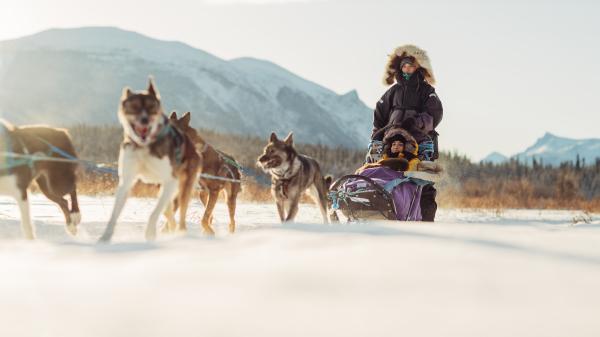
Anytime is a good time in the Yukon
No wrong time to visit the Yukon, just the right one for you.
Find your Yukon seasonAnytime is a good time in the Yukon
No wrong time to visit the Yukon, just the right one for you.
Find your Yukon seasonHit the heart icon to bookmark a page. That way, you can keep exploring without leaving anything behind.
Create an account to access personalized activity recommendations, save your favourites, and receive new and exclusive content by email.
You’re a business? Go this wayTraveller Quiz
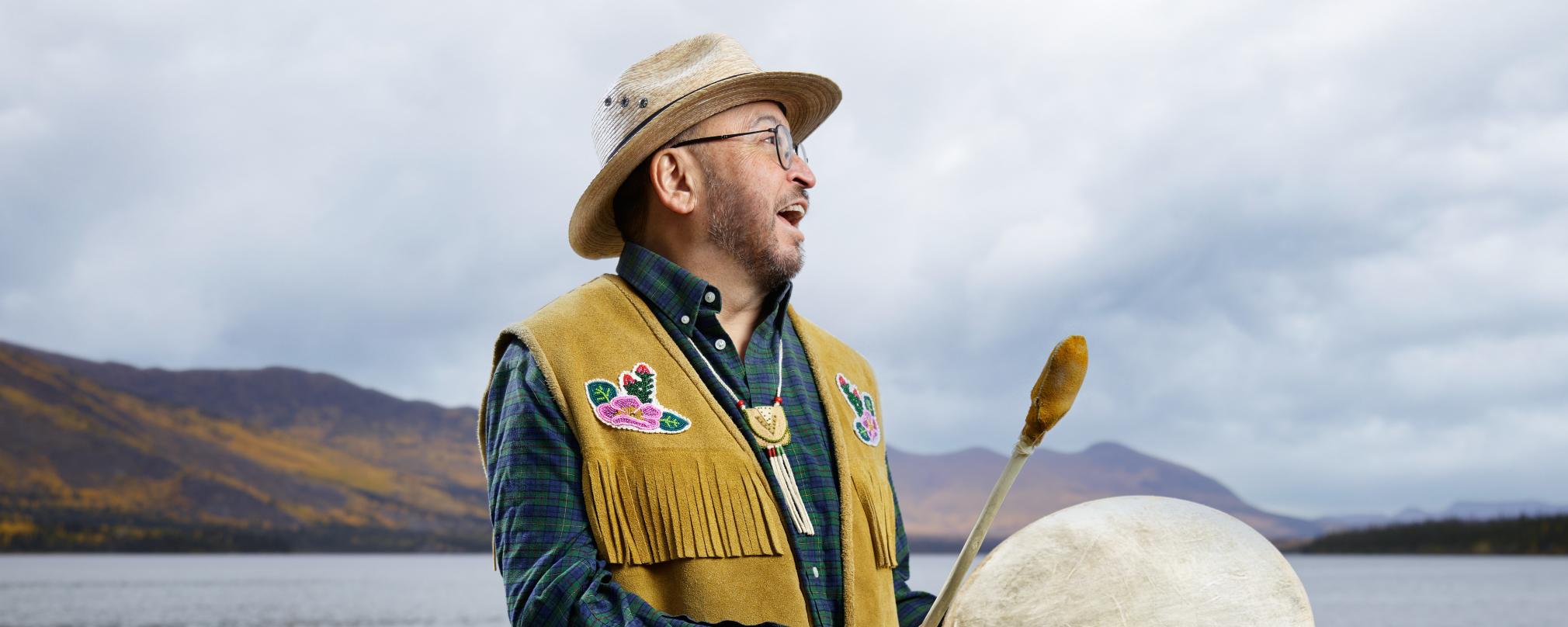
As the warmth of early summer blankets the Yukon, June arrives, bringing with it Indigenous History Month – a time to honour the vibrant cultures of the Yukon First Nations. For visitors eager to delve beyond landscapes, this month offers a unique opportunity to connect with the living history of the people who have called this land home for millennia. From immersive cultural centres and vibrant events, to locally crafted art and guided tours led by First Nations knowledge holders, there are many enriching ways for travellers to respectfully experience and learn about the deep-rooted traditions that continue to shape the Yukon identity.
In celebration of National Indigenous History Month, we aim to spotlight, through this first iteration, the inspiring stories of eight remarkable individuals. From artists preserving ancient techniques to leaders forging new paths, knowledge keepers sharing invaluable wisdom to entrepreneurs building a vibrant future, these biographies offer a glimpse into the rich human stories that lie at the heart of the diverse and complex cultural landscape.
When Katelyn Dawson feels unmotivated during a run on one of the Yukon’s many trails, she slows down and touches the trees and plants she passes. “It feels like they’re high-fiving me and encouraging me to keep going,” she says laughing. It’s one of the reasons Dawson, a red seal carpenter, personal trainer, and youth outreach and wellness coordinator with the Kwanlin Dün First Nation (KDFN), chooses to run outdoors instead of on a treadmill at the gym. “You’re more connected to the land and more grounded,” Dawson says of the trails around Fish Lake, where she spent her childhood fishing, picking berries and hunting moose. “You’re actually going places and you’re seeing things. You’re tapping into all of your senses and noticing things when you’re running on the land—the scenery and the animals.”

Maybe even more than the recreational benefits, Dawson appreciates those trails for the teaching opportunities they offer. When she’s out on them, she pays attention to the plants she high-fives, so she can learn more about them later. In her role with KDFN, she visits the area during culture camps, to show youth how to fillet fish, set and pull nets, hunt, and share knowledge. The land has even informed how she wants to run her personal training business. Dawson aims to dovetail fitness with on-the-land activities, leading her clients through “that sacred little space” between her own culture, and western science and culture.
At Fish Lake, where she’s had incredible runs on her own, and even better talks with friends, she can feel the connection between mental and physical health. Fitness, with its ups, downs, emotions and lessons, can teach us a lot about life’s challenges. Dawson wants to introduce that understanding to others.
“There’s something about just being in the mountains,” she says. “It’s like medicine.”

One of Kyra Chambers’ earliest memory is her dad climbing on horseback and strapping her into the saddle in front of him. Rocking back and forth during the ride as they headed out, Chambers fell asleep. That experience shaped her future. Today, Chambers is the owner and operator of Champagne Pack Trains Ltd. She works with a herd of mountain horses like those she dreamed of owning when she was a kid, to offer tours on her traditional territory. One of her favourite places to take clients, whether experienced riders or younger kids, is Kluane National Park. A trip there, along the Cottonwood Trail, is what sparked the idea for her company in the first place.
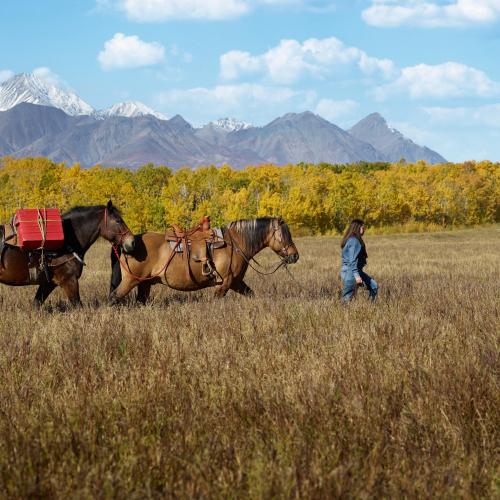
Chambers’ tours in that area highlight its open, grassy fields; breath-taking mountain views; the animals you’ll find in the area; the grizzlies that live there; and the history of the Champagne and Aishihik First Nation, of which she’s a citizen. Recently, Chambers found a recording of her late father, Frank Chambers, talking about being 18 years old and guiding geologists on those same trails in the 1950s. It was a reminder to her of how long her family has been on that land and how it’s now her turn to share it with the world. “The first time I listened to [that recording] it felt like I was walking the path that I’m meant to walk on, especially since horses were so important to him too,” she says. “I get to live my dream, but his as well.”
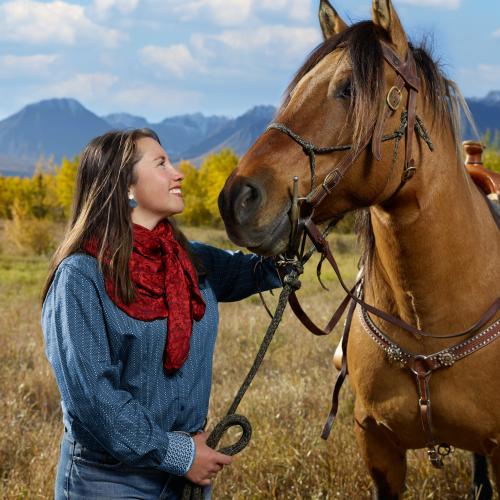
Gary Sidney calls himself a Carcross must-see. That’s because a lot of the local tours Sidney offers focus on the rich history of the land and its people in a way that isn’t as widely known by visitors. Take the Chilkoot Trail, for example. “That trail is glorified with tales of the Gold Rush, but there’s more history to us than that,” says Sidney of the Carcross/Tagish First Nation, of which he’s a citizen. He likes to tell tourists who was on the land there first and why, and to talk about the differences between the trail stampeders used versus the traditional trails he has hiked along the famed passageway.

“Our trail was smart and it stuck to land formations and ridgelines. The settlers’ trail, if you looked over the cliffs you’d see fallen carts and garbage and dead horses,” he says. “Our trail might have been another 100 kilometres long, but it was smarter.” Sidney, who also goes by Mr. Carcross, doesn’t offer set tours on specific topics at pre-determined times, but you can usually find him around Haa Shagóon Hídi (Our Ancestors House) where he might be talking about the artists whose work is on display in the cultural centre; the history of the clans in the area; or how Cacross is short for Caribou Crossing because so many caribou used to pass through it, Elders have told him it felt like an earthquake every morning at 5 a.m. “The mountain used to look like it was breathing,” he says. “Like it had a pulse, it had so many caribou on it.”
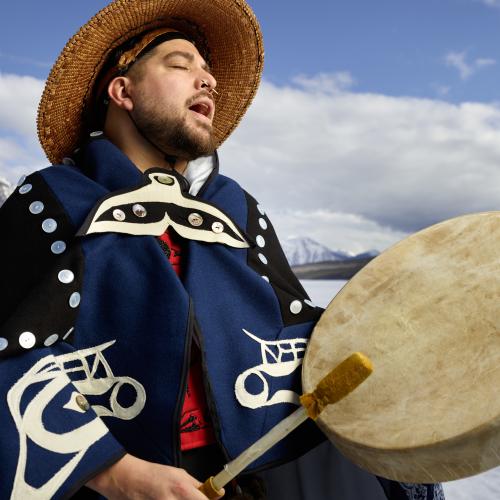
A walk in the woods is what Blake Shaá'koon Lepine calls “going shopping for ideas.” “I keep my antennas up,” says Lepine, a Tlingit, Cree and Hän artist whose inspiration always comes from the land. Living in Whitehorse, Lepine says he’ll regularly catch sight of something simple that he may not have paid much attention to in the past. A closer look often leads to an idea, which he explores through carving, sculpture, jewellery, printmaking, painting and even his work as an herbalist. Among other things, Lepine used balsam poplar as part of a general salve for coughs and colds, and as part of a cream for muscle aches. It’s one of many lessons he learned from the land around Carcross, where part of his family has been for generations.

Walking the railroad toward Bennett Lake or Whitehorse makes for a beautiful day. Lepine also enjoys following the river to the beach in Carcross. He says it almost doesn’t matter where you go, as long we you keep your antennas up too. “I just think we’re really blessed and lucky here to have such beauty and pristine wilderness and I really want people to take that in,” he says. “Because I feel like a lot of people come here who live in the concrete jungle and have never seen wilderness like that before. I hope they just spend a minute appreciating it.”
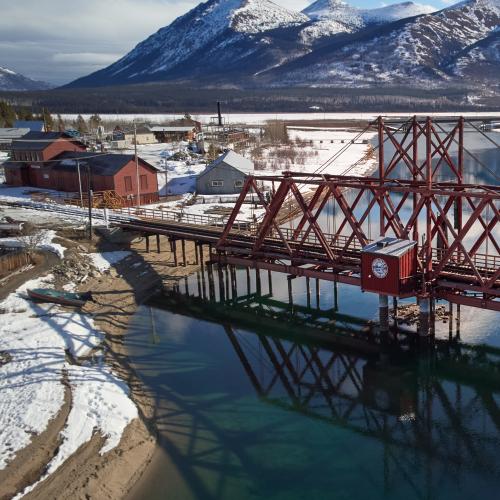
Grace Southwick has lived in various Yukon communities in her 65 years. That’s how she knows Destruction Bay, where she lives now, is the best spot there is. “I might be prejudiced, but I think this is the most beautiful place in all the Yukon,” she says. “The scenery around here is just amazing. Everywhere you look, you’re in awe of the beauty of the mountains, the rivers, the lakes. The chance to sit and listen to the wilderness.” Southwick, a citizen of the Kluane First Nation (KFN), was born in nearby Burwash Landing, on the shores of Kluane Lake. Having recently retired from the job she held for 25 years with KFN, Southwick now splits her time between volunteering at Kluane Lake School (she gardens with the school’s 14 students) and enjoying getting out on the land she loves.
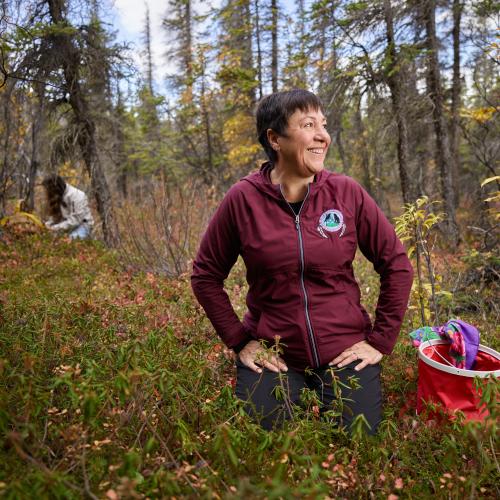
One of the ways she does this is by berry-picking. Southwick rotates her spots for cranberries, high-bush cranberries and blueberries so she’s not putting pressure on any one area. Her granddaughter, also named Grace, often accompanies her while picking, fishing and hunting.
From her home in Destruction Bay, population 45, Southwick has easy access to a harbour, which allows her to get out on the Yukon’s largest lake. Sometimes she just goes for the day, other times to travel to her cabin at the other end of Kluane Lake. It’s never surprised her that tourism to her small, quaint community booms from May to September, it’s also when Kluane National Park opens for hiking and camping. “It’s just majestic,” she says. “It’s a place like nowhere else.”
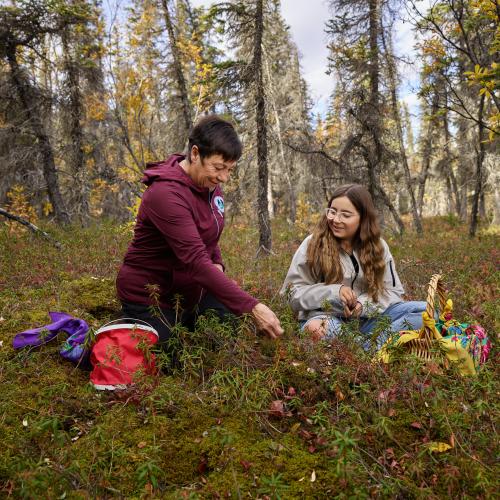
If you’ve ever visited Haines Junction, chances are you learned something from John Fingland. A citizen of the Champagne and Aishihik First Nation (CAFN), Fingland leads campfire talks with Parks Canada at Kathleen Lake, is a senior heritage interpreter at the Da Kų Cultural Centre and will just kind of lead impromptu tours for anyone who tells him Hey John, I’ve got family visiting the Yukon.
“I represent my First Nation a lot in my life,” Fingland says. “It’s hard to say no.”
Having lived in Champagne, about 40 minutes east of Haines Junction, since 2010, Fingland loves giving walking tours of his village and explaining how people travelled through the area in the past; why the village was established; where to find grayling in the spring; and the story behind the thousands of shards of obsidian you can kick up out of the sand in the area—it served as the raw material for certain cutting tools thousands of years ago.

Fingland also travels daily into Haines Junction to work in the local school. His band plays at Pine Lake on Friday nights and he helps launch a traditional dugout canoe onto the lake every Wednesday during the summer months at 1 p.m. Anyone can come and paddle the canoe, he says. A lot of visitors tell him it was the highlight of the whole trip to experience the canoe, which was made by Tlingit master carver Wayne Price and a group of CAFN youth. As a side trip from the Junction, Fingland recommends following the Haines Road toward Haines, Alaska, or continuing north on the Alaska Highway to Silver City, to see Kluane Lake and Kluane National Park.
“It speaks for itself,” Fingland says of the park, which has no roads and is only accessible by foot. “It’s one of the greatest places in the world. It’s the real jewel around here.”

Margarata Sheyamdusti feels lucky to call Carcross home, even if she’s currently living in Whitehorse. “I grew up there and always had my family around me,” says Sheyamdusti, a woman of the kookhittaan clan who goes by her Lingit name. “My grandma would teach sewing and fishing, berry-picking and gathering medicine … I deeply cherish those traditions.” And she carries them on. Sheyamdusti, who works for the Carcross/Tagish First Nation (C/TFN) as a youth translator, is currently enrolled in a full-time program at the Yukon Native Language Centre, where she’s learning Tlingit.
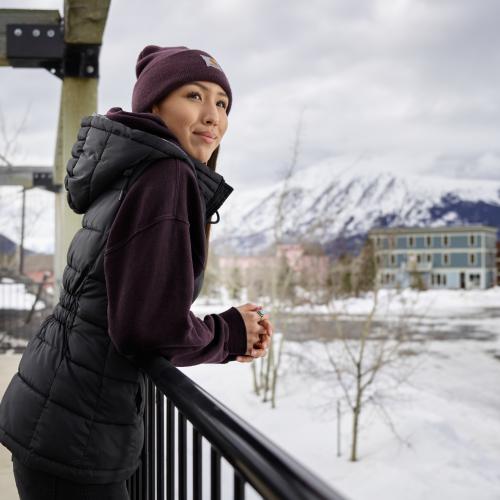
“The more I work with the language, the more I feel like I’m being given the key to unlocking the language,” she says of the program, which is giving her guidance when it comes to both the grammar and meaning of Tlingit. When she has spare time in Carcross, Sheyamdusti spends it in some of her favourite places, including Nares Mountain, known for its hiking trails, and Montana Mountain, famous for its single-track mountain biking opportunities.
For Sheyamdusti, the views are only part of the reason she climbs so high—the greater reason is the sense of peace and connection she feels simply being outdoors in the North.
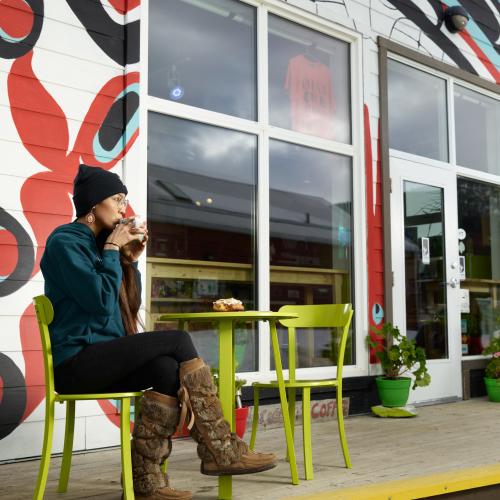
When it comes to visiting the Yukon, one of the biggest perks is how friendly everyone is.
“If you don’t exactly know what to do, there’s a very high chance that if you go into one of the local restaurants or bars, someone is going to have a suggestion for you,” says Olivia Gatensby, who grew up in the territory. “People will point you in the right direction.” Gatensby, who works in communications for the Kwanlin Dün First Nation (KDFN), says that’s true even if you don’t fit the outdoorsy mould people often associate with the Yukon. Gatensby doesn’t consider herself sporty but says some of her favourite activities end up taking place outdoors anyway—like walking the paved path that runs along the Yukon River in downtown Whitehorse, or swimming in one of many local lakes each summer, when you can stay out late and enjoy the midnight sun.
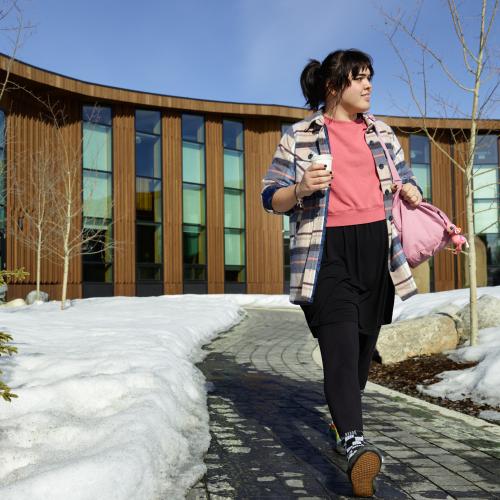
Beyond that, one of the highlights for her is the arts and cultural scene in Whitehorse. There’s always something happening at The Guild Hall, a theatre in the city’s Porter Creek neighbourhood, or Lefty’s Well, a downtown music venue. There are also plenty of summer music festivals and free outdoor live music events. Again, if you’re not sure how to find out what’s on when, Gatensby suggests just asking someone.
“The great thing about the Yukon is lots of people who live here came from somewhere else,” she says. “There’s no shortage. You’ll bump into one of them and they’re the best to ask because they had to learn it too.”

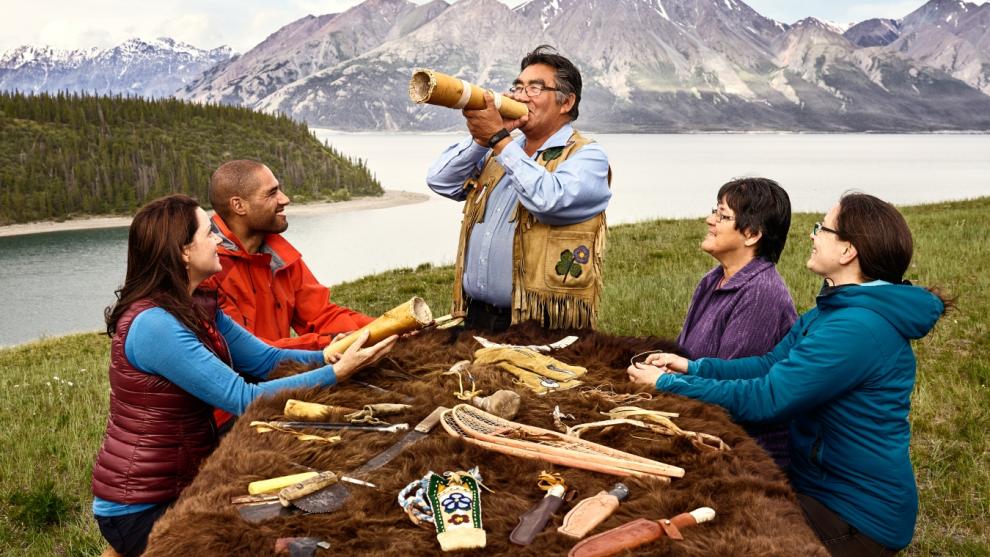
Ná t’sin t’ra - hold everything up in respect
"We care for this land — the plants, water, air and animals — by showing it respect and treating it as an equal."
Learn more about how to travel respectfully